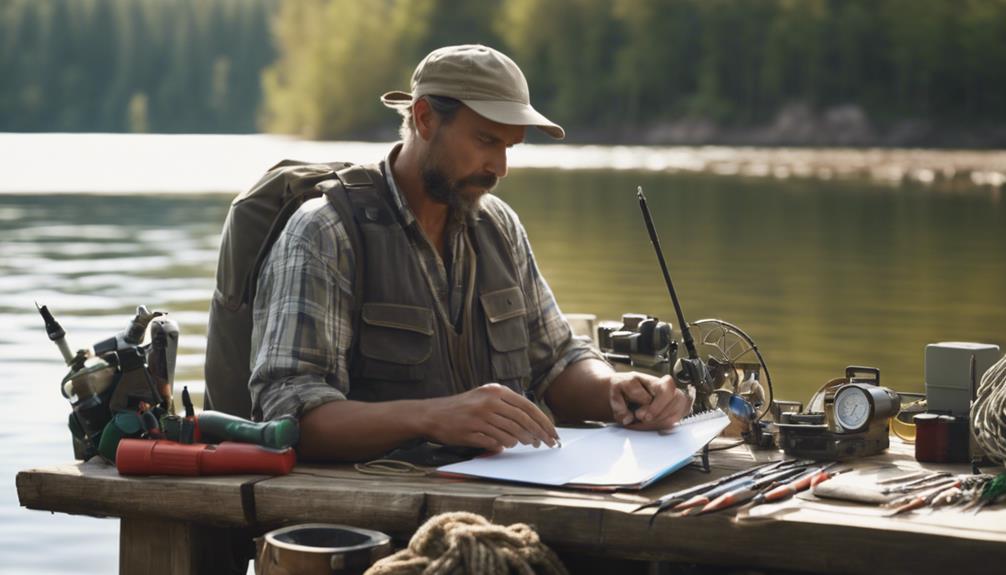“`markdown
# The Ultimate Guide to Caddis Fly Fishing: Techniques, Tips, and More
Caddis fly fishing is a captivating experience for anglers seeking to catch fish using one of nature’s most versatile and abundant insects. This comprehensive guide will delve into the essentials of caddis fly fishing, covering everything from the biology of caddisflies to effective techniques and patterns. Whether you’re a seasoned angler or a novice, this article will provide valuable insights to enhance your fishing experience.
Understanding Caddis Flies: The Basics of Their Lifecycle
Caddisflies belong to the order Trichoptera and are commonly found near freshwater bodies. Their lifecycle consists of four stages: egg, larva, pupa, and adult. Adult caddisflies are recognizable by their distinctive tent-like wings, which they fold over their bodies. They are typically most active during the spring and summer months, making them a prime target for anglers. Caddis larvae, often referred to as “caddis worms,” inhabit the riverbed and are crucial to the diet of many freshwater fish species. Understanding their lifecycle is essential for successful caddis fly fishing, as it helps anglers mimic their natural behavior and select the right patterns and techniques for effective fishing.
The Best Times for Caddis Fly Fishing: Seasonal Considerations
Timing is everything in caddis fly fishing. Caddisflies are most active during warmer months, especially in late spring and early summer. During this period, you’ll witness significant hatches, where adult caddisflies emerge en masse. Early mornings and late afternoons are the prime times for fishing, as fish are more likely to feed on the surface when caddisflies are hatching. Additionally, rainy days often trigger increased activity among caddisflies, making it an ideal time for fishing. By aligning your fishing trips with these seasonal patterns, you can significantly increase your chances of a successful catch.
Choosing the Right Gear for Caddis Fly Fishing
Selecting the appropriate gear is crucial for effective caddis fly fishing. Your rod and reel should be lightweight and sensitive to detect subtle bites. A 9-foot, 5-weight fly rod is ideal for most freshwater situations, providing the perfect balance between control and power. Additionally, use a floating fly line to present your flies on the water’s surface, mimicking the natural behavior of adult caddisflies. Don’t forget to equip yourself with a selection of tippet and leader material, as these will affect your casting and presentation. Finally, a good pair of polarized sunglasses will help you spot fish and see underwater structures, enhancing your overall fishing experience.
Effective Techniques for Caddis Fly Fishing
When it comes to caddis fly fishing, employing the right techniques can make all the difference. One effective method is the “dry fly” technique, where you present a floating caddis fly pattern on the water’s surface. As fish rise to feed, they often target these insects, providing thrilling action. Another technique is the “nymphing” method, which involves fishing caddis larvae or pupae patterns below the surface. This approach can be particularly effective during times when fish are less likely to rise to the surface. Experimenting with both techniques will allow you to adapt to varying conditions and increase your chances of success.
Popular Caddis Fly Patterns: What You Should Have in Your Tackle Box
Having a variety of caddis fly patterns in your tackle box is essential for any successful fishing trip. Some of the most popular patterns include the Elk Hair Caddis, which mimics the adult caddisfly and is effective during hatches. The Green Rock Worm is an excellent choice for imitating caddis larvae, while the Caddis Pupa pattern works well beneath the surface. Additionally, the CDC Caddis is a versatile pattern that performs well in various water conditions. By having a diverse selection of caddis fly patterns, you can adapt to the preferences of the fish you’re targeting and the specific water conditions you encounter.
Reading the Water: Ideal Habitats for Caddis Fly Fishing
Caddisflies are often found in fast-moving streams and rivers, as they thrive in clean, well-oxygenated water. When searching for the best fishing spots, look for areas with rocky bottoms, overhanging vegetation, and riffles. These habitats are conducive to caddisfly populations and, consequently, the fish that feed on them. Additionally, pay attention to areas where water flows into slower pools, as fish often gather in these spots to ambush unsuspecting prey. By understanding how to read the water and identify ideal habitats, you can maximize your chances of encountering active fish.
Conservation and Ethical Caddis Fly Fishing Practices
As anglers, it is our responsibility to practice sustainable fishing and protect the ecosystems we enjoy. When engaging in caddis fly fishing, be mindful of catch-and-release practices to ensure the health of fish populations. Avoid damaging aquatic habitats by staying on designated paths and minimizing your footprint in sensitive areas. Additionally, educate yourself on local fishing regulations and adhere to seasonal closures to protect spawning fish. By prioritizing conservation efforts, we can help maintain healthy caddisfly populations and the diverse ecosystems that depend on them for future generations of anglers.
Conclusion: Embrace the Art of Caddis Fly Fishing
Caddis fly fishing offers a unique blend of challenge and excitement for anglers of all skill levels. By understanding the biology of caddisflies, employing effective techniques, and practicing ethical fishing, you can enjoy a rewarding experience on the water. Whether you’re casting a line in a tranquil stream or navigating a bustling river, the thrill of connecting with nature through caddis fly fishing is unparalleled. So gear up, choose your favorite caddis patterns, and head out to discover the joys of this captivating fishing technique.
“`
